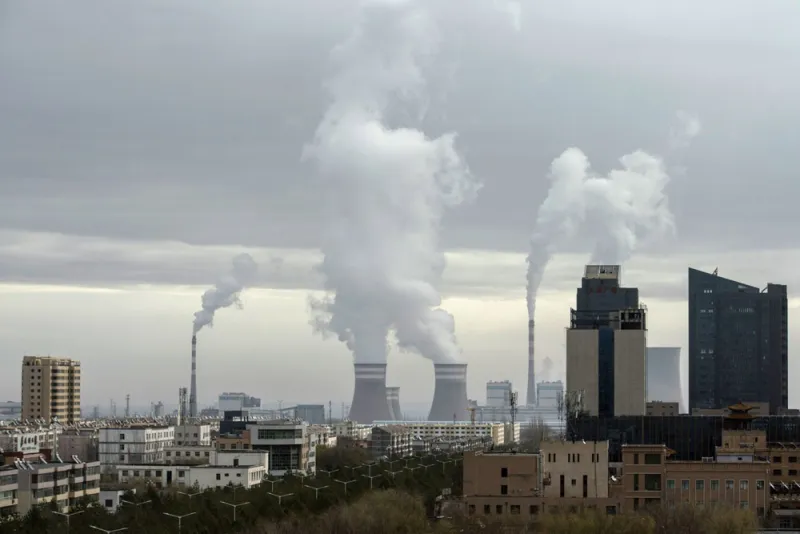The Asia-Pacific region’s notoriously low ratings on investment research firm MSCI’s environmental, social, and corporate governance scale are beginning to trend upward.
According to a new report from MSCI Research’s executive director Miranda Carr, over 80 percent of the sectors in each APAC market have improved their overall ESG scores over the last three years. In fact, over the course of the data collection period — from Dec. 1, 2018, to May 25, 2021 — the majority of strong performers were previously markets with ESG scores below the global average.
“A lot of companies are moving out of the laggard class,” Carr told Institutional Investor. “You’re seeing ESG awareness really kicking off. Some of that is driven by foreign investors, and some of it is driven by increased awareness from domestic investors.”
The regional improvement in ESG average scores is also partially a result of increased regulatory pressure in places like China and Japan and pushes for both disclosure of and improvement in ESG practices, Carr said.
From 2018 to 2020, APAC countries that were considered ESG laggards, including Malaysia, Philippines, Indonesia, South Korea, and Mainland China, showed the strongest increase in ESG scores. For example, South Korea’s average ESG score increased 13 percentage points over the time period, and Mainland China’s increased 16.1 percentage points.
“China is a very emerging economy,” Jason Hsu, Rayliant Global Advisors’ founder, told II. “No one should be surprised that the trajectory in ESG improvement will often mirror the trajectory in its economic development. As it emerges toward more Western standards, in terms of per capita income and per capita consumption, it is no surprise that people want to have a better environment, better labor conditions.”
In its APAC index, MSCI separates markets into three categories: laggers, average, and leaders, titles based on overall ESG scores of companies based in these countries. Compared to MSCI’s global index, APAC is still behind when it comes to ESG. But from 2018 to 2020, all three categories saw marginal improvement. Most notably, the number of APAC laggards fell two percentage points.
In the near future, Carr expects global investors to increasingly add APAC-based companies to their portfolio to fulfill their overall ESG objectives. In general, she expects increased investor engagement in the region.
“In APAC markets, there’s a scope for quite a fast pace of improvement,” Carr said. “Instead of writing it off as a place with low ESG scores, you could say that this is going to be where the improvement in ESG scores is going to be the strongest in the next three-to-five years.”
APAC includes the ASEAN region, Austria and New Zealand, Mainland China, Hong Kong, Japan, South Korea, and Taiwan — referred to in this study as “markets.” The sectors measured when calculating a specific market’s ESG score changes over the past three years include materials, energy, and consumer staples. Researchers included these sectors because they have historically received the lowest ESG scores.
APAC's ESG Challenges Persist
Historically, the region has dealt with low ESG adoption and awareness and limited ESG regulation and reporting. The particular sectors Carr focused on in the report — energy, materials, and consumer staples — pose the greatest ESG risks to the region and therefore require stronger corporate management and more reporting.“APAC, particularly China and India being global laggards in ESG scoring, albeit with some improvement, is not surprising given their state of manufacturing relative to the West,” said Jim Neumann, chief investment officer of Sussex Partners, a hedge fund advisory firm.
On a country-by-country basis, India, China, and South Korea remain significant risks to the overall regional ESG score. For example, China’s and India’s energy sectors received ESG scores of two and three, respectively. To put these numbers into context, Australia and New Zealand (grouped together and considered leaders of ESG in the region) received an energy ESG score of seven; Japan got a 6.3.
On a sector basis, sectors with fewer ESG issues, such as the financial and healthcare sectors, saw increased ESG average scores. However, in sectors like consumer staples and consumer discretionaries, APAC markets still lagged behind the global average.
“There are still concerns with the human capital side, which stretches from the consumer staples side through to technology and pharmaceuticals,” Carr said. “We are seeing some improvement, but that varies by the market.”
Additionally, the environmental scores for the consumer-staples sector across all countries in the region declined. Carr attributed this trend to two factors: “a drop in performance for natural capital in India and Australia owing to greater water stress in these markets (primarily affecting the food producers and beverage companies); and the addition of plastic waste as a key Issue for the consumer-staples sector, which has particularly hit companies in South Korea and Japan,” she wrote.
Despite the challenges, both Carr and Hsu said they are optimistic about APAC’s changing ESG landscape and what it may mean for regional and global investors.
“I find it very encouraging,” Hsu said. “This progress means the increase in prosperity [in the region] is starting to allow ESG to be passed on.”







